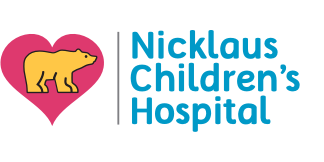- Parents Home
- Para Padres
- Allergy Center
- Asthma Center
- Cancer Center
- Diabetes Center
- Diseases & Conditions
- Doctors & Hospitals
- Emotions & Behavior
- First Aid & Safety
- Flu Center
- Food Allergy Center
- General Health
- Growth & Development
- Heart Health
- Homework Help Center
- Infections
- Newborn Center
- Nutrition & Fitness Center
- Play & Learn Center
- Pregnancy Center
- Q&A
- Recipes
- School & Family Life
- Sports Medicine Center
- Videos
- Kids Home
- Para Niños
- Asthma Center
- Cancer Center
- Diabetes Center
- Feelings
- Getting Help
- Health Problems
- Health Problems of Grown-Ups
- Heart Center
- Homework Center
- How the Body Works
- Illnesses & Injuries
- Kids' Medical Dictionary
- Movies & More
- Nutrition & Fitness Center
- Puberty & Growing Up
- Q&A
- Recipes & Cooking
- Relax & Unwind Center
- Stay Safe Center
- Staying Healthy
- Staying Safe
- Videos
- Teens Home
- Para Adolescentes
- Asthma Center
- Be Your Best Self Center
- Cancer Center
- Diabetes Center
- Diseases & Conditions
- Drugs & Alcohol
- Expert Answers (Q&A)
- Flu Center
- Homework Help Center
- Infections
- Managing Your Medical Care
- Managing Your Weight
- Nutrition & Fitness Center
- Recipes
- Safety & First Aid
- School & Work
- Sports Center
- Stress & Coping Center
- Videos
- Your Body
- Your Mind
A to Z: Diastrophic Dysplasia
May also be called: Diastrophic Dwarfism; Short-Limbed Dwarfism; Short-Limbed Dysplasia
Diastrophic dysplasia (die-UH-strah-fik dis-PLAY-zhee-uh) is a rare genetic disorder that interferes with bone development causing abnormal bone growth and dwarfism (short stature) with very short arms and legs.
More to Know
During a baby's development in the womb, much of the skeleton is made up of a flexible tissue called cartilage that is converted to bone by a process called ossification. Diastrophic dysplasia affects the body’s ability to form cartilage and bones. This results in shorter bones, short stature, joint and hand deformities, and abnormal curving of the spine (lordosis, scoliosis, or kyphosis). Diastrophic dysplasia is also sometimes associated with cleft palate, clubfeet, and ears with a cauliflower-like appearance.
Diastrophic dysplasia is caused by a mutation in a gene responsible for making a protein needed to develop cartilage and convert it to bone. Most of the time, the mutated gene is inherited from one's parents, but in a small number of cases, the mutation happens randomly.
There is no specific treatment for diastrophic dysplasia, but complications like scoliosis and clubfeet are often treated with surgery or the use of special braces or shoes to realign the bones. The goal of treatments are to help those who have it maintain mobility and strength.
Keep in Mind
There is no cure for diastrophic dysplasia, but the symptoms are typically only physical. Most people with diastrophic dysplasia have average intelligence and a normal life expectancy and can expect to lead productive lives.
All A to Z dictionary entries are regularly reviewed by KidsHealth medical experts.

© 1995- The Nemours Foundation. KidsHealth® is a registered trademark of The Nemours Foundation. All rights reserved.
Images sourced by The Nemours Foundation and Getty Images.

